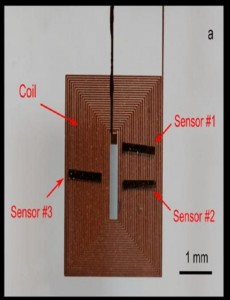There are devices and systems that have the ability to test the safety of food, but this new invention is better because it uses a “wireless acoustic wave sensor platform — combined with a surface-scanning coil detector”, which is extremely low cost.
Most of today’s devices can only function if the sensor is inside of a coil “to measure the sensor’s signals.”
“The key to our discovery is that measurement of biosensors can now be made ‘outside the coil’ by using a specially designed microfabricated reading device,” Yating Chai, a doctoral student in Auburn University’s materials engineering program, said.
“In the past, if we were trying to detect whether or not a watermelon was contaminated with Salmonella on the outside of its surface, the sensors would be placed on the watermelon, and then passed through a large coil surrounding it to read the sensors,” Chai said.
The device is extremely easy to use. It is handheld and can simply be passed over food to find out if it is contaminated.
